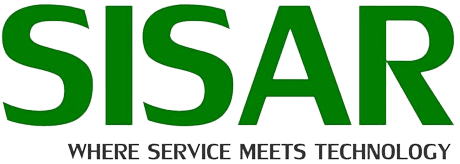A recent survey says that 9 out of 10 mid-market companies have either adopted or are considering investments in ERP solutions.

As the largest ERP vendor globally and the 12th largest technology company, SAP is adopted by over 400,000 enterprises spanning 150 countries.
Ever wondered what made the company bloom in the market nowadays?
This article delves into the captivating narrative of SAP’s contemporary features, exploring the key factors propelling its success.
What is SAP?
Before knowing about the solution, let us first understand what SAP does.
Managing and optimizing resources is paramount in modern business’s dynamic and intricate world. This is where Enterprise Resource Planning (ERP) systems step in as a revolutionary solution.
ERP is a comprehensive software framework that integrates various business processes and functions into a single unified system.
SAP is a multinational software corporation known for developing enterprise resource planning (ERP) software solutions.
SAP, which stands for (Systems, Applications, and Products) in Data Processing, was founded in 1972. The company was initially established in Mannheim, Germany.
Its early focus was on developing software that could standardize and automate business processes for enterprises. Their first product, called SAP R/98, was released in 1973. Over the years, the company evolved and expanded its product offerings, particularly in enterprise resource planning (ERP).
SAP’s ERP systems gained significant popularity in the 1990s and early 2000s as businesses increasingly recognized the benefits of integrated software solutions for managing various operations. Its solutions played a pivotal role in helping companies streamline processes, improve efficiency, and gain better insights into their business data.
SAP S/4 HANA
In 2015, SAP S/4 HANA, the fourth generation of SAP’s ERP suite, was released. It distinguishes itself with its innovative architecture and user-centered approach.
S/4HANA boasts an intuitive Fiori-driven UI, ensuring a consumer-grade experience. It introduces a streamlined data model, minimizing redundancy and enhancing data integrity.
The in-memory database grants instant data access, aiding real-time decision-making. The result is optimized processes, heightened efficiency, and reduced manual labor.
SAP modules with Operational Excellence
SAP solutions are organized into various modules, each addressing specific business functions and processes. Here’s an overview of some prominent SAP modules:
- Finance and Controlling (FICO): It handles financial accounting processes, including general ledger, accounts payable, accounts receivable, asset accounting, and financial reporting. The CO module focuses on management accounting and controlling costing. It aids in tracking costs, performing cost allocations, budgeting, profitability analysis, and internal reporting.
- Sales and Distribution (SD): This module manages sales processes, from order to delivery. It includes order processing, pricing, inventory, and customer management.
- Materials Management (MM): The MM module oversees procurement and inventory management. It covers purchase requisitions, purchase orders, goods receipts, and invoice verification.
- Production Planning (PP): It handles production processes, including planning, scheduling, and execution of manufacturing operations. It ensures optimized production and resource allocation.
- Human Capital Management (HCM): The HCM module covers personnel management, payroll, benefits administration, time management, and organizational management. It aids in workforce management and HR processes.
- Quality Management (QM): This module focuses on quality control and assurance across production and procurement processes. It includes quality planning, inspection, and notification of defects.
- Plant Maintenance (PM): The PM module manages equipment and facility maintenance. It covers maintenance planning, work order management, and preventive maintenance.
- Customer Relationship Management (CRM): CRM enhances customer engagement by managing customer interactions, sales, marketing, and service activities.
- Supplier Relationship Management (SRM): streamlines supplier collaboration, procurement, and sourcing processes. It aids in supplier evaluation and contract management.
Key benefits of SAP you should know
ERP solutions provide a competitive edge in the software industry’s fast-paced environment by optimizing operations, enabling data-driven decisions, and fostering seamless collaboration.
As software companies navigate the complexities of the digital era, ERP systems emerge as indispensable tools for sustained growth and innovation.
Its extensive usage cuts across various industries primarily due to its proficiency in optimizing end-to-end business processes efficiently. By offering clarity across standard applications, industry-specific solutions, technology, and platforms, SAP facilitates alignment and design according to organizational strategies.
Moreover, SAP enables organizations to connect their business processes with operational and functional data effortlessly. This integration, in turn, empowers them to elevate the quality of customer experiences they offer.
- Manual tracking of metrics like sales margins becomes complex as the business expands. SAP automates processes, granting swift data access and synchronized metric reports.
- SAP ERP slashes admin costs by offering real-time data for operational control, reducing disruptions, and enhancing decision-making speed.
- By centralizing records in SAP, duplication is curbed, ensuring accurate, transparent data. The system facilitates monitoring diverse operations, boosting clarity and task evaluation.
- SAP ERP curbs repetitive tasks, boosting productivity, data accuracy, and process oversight across different business segments.
- SAP ERP prioritizes customer-centricity, providing flexible deployment options. Sales reps access real-time data on multiple devices, improving productivity and effectiveness.
To Conclude
ERP solutions provide a competitive edge in the software industry’s fast-paced environment by optimizing operations, enabling data-driven decisions, and fostering seamless collaboration.
As software companies navigate the complexities of the digital era, ERP systems emerge as indispensable tools for sustained growth and innovation.
Amidst the ongoing trials of the contemporary business realm, SAP emerges as a guiding beacon, shedding light on the route to effective, pioneering, and enduring operational strategies.
Connect with SISAR to know more.






